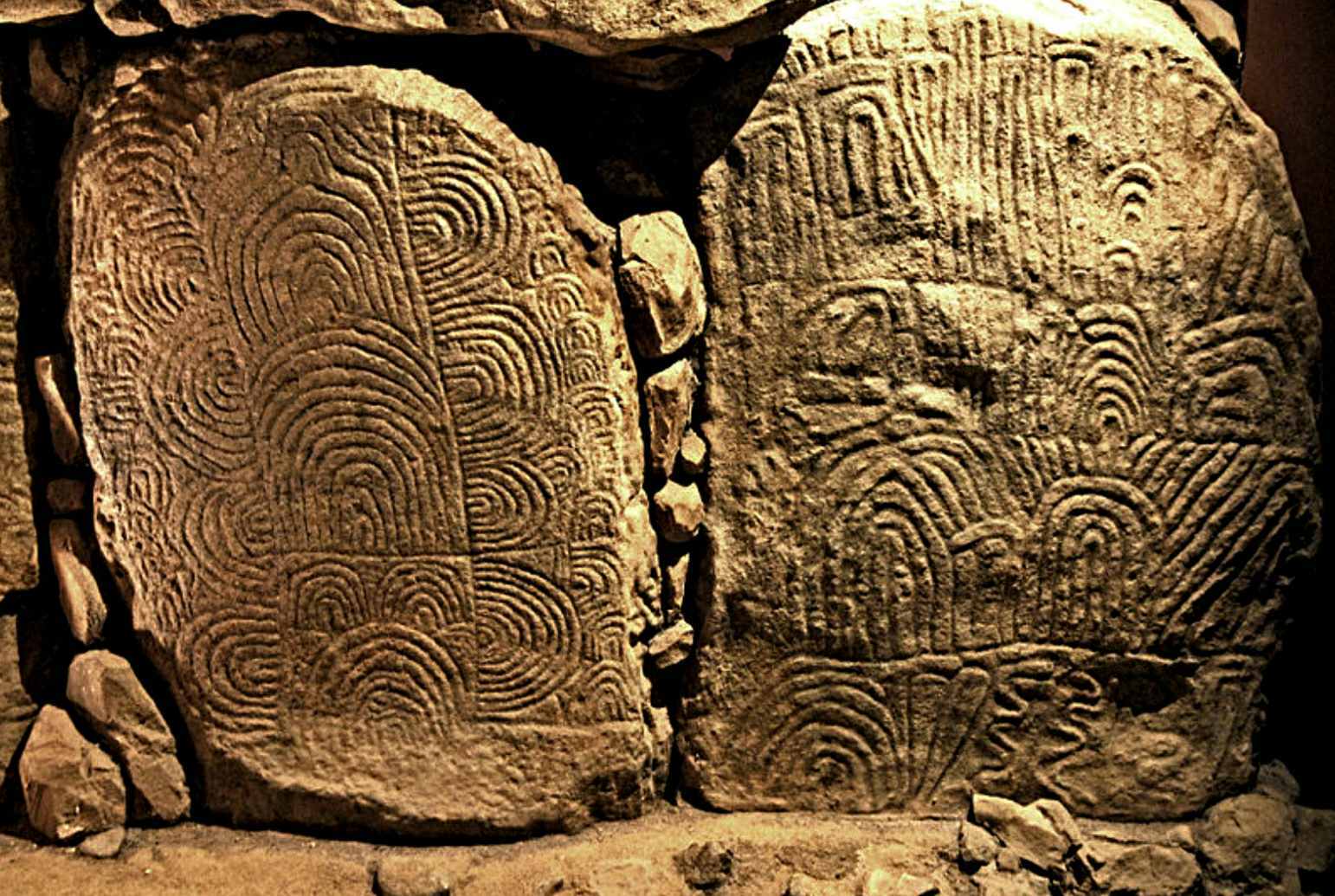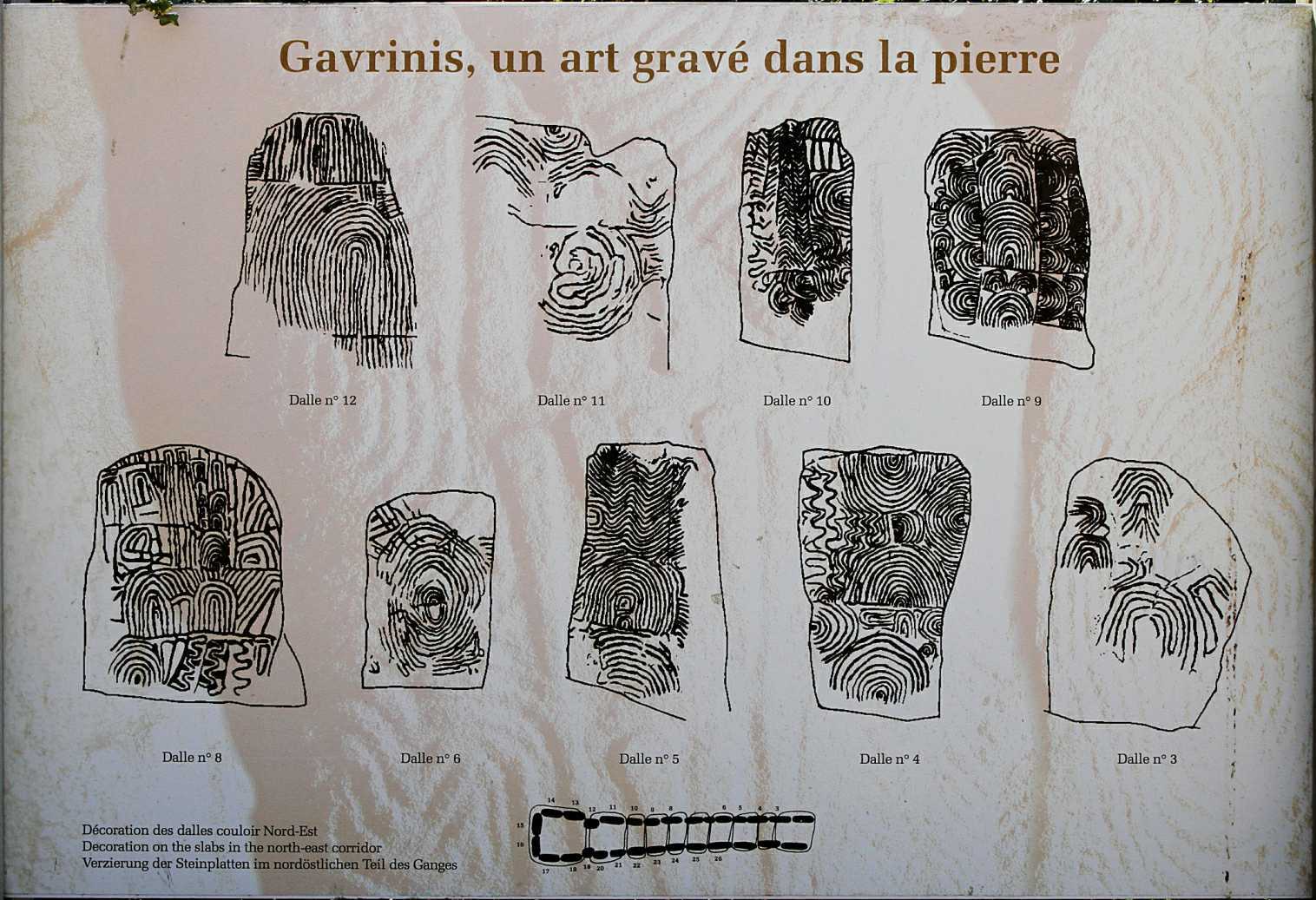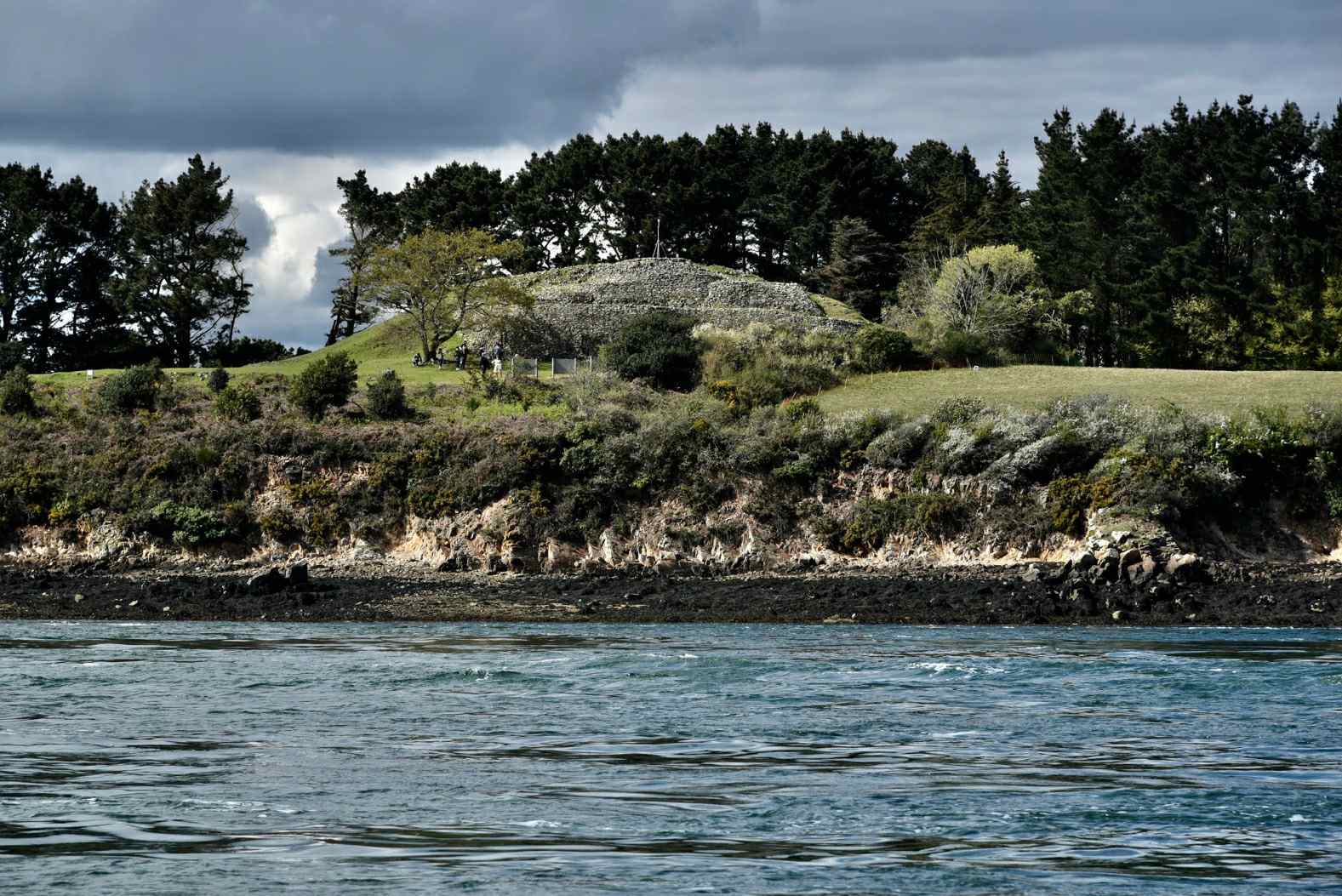Gavrinis, a mysterious tiny island in the Gulf of Morbihan, along the rocky coast of Brittany, France, that contains the Gavrinis tomb, a megalithic monument notable for its abundance of megalithic art in the European Neolithic. It was built around 3500 BC.

Scholars and researchers were surprised to find what depicted on the walls of the prehistoric Gavrinis tomb – the perfect size of the Earth’s circumference, the number of days in one year, the mathematical constant π (pi), and the exact longitude and latitude of the island of Gavrinis!!

According to Giorgio A. Tsoukalos, a renowned ancient astronaut theorist, “Gavrinis is a remarkable tomb unlike anything that has ever been found. This ‘tomb’ presents incredibly advanced mathematical knowledge, which goes back to prehistoric times. Which in fact leaves researchers behind. The most amazing thing about Gavrinis is that there are spirals and things that almost look like fingerprints carved into huge slabs of rock. The mathematicians who have studied the place agree that there are hidden messages, mathematical messages for the most part.”

When researchers arrived at Gavrinis, they began to take numerous measurements regarding the disposition of rocks. It didn’t take them long to notice that they weren’t just randomly placed in place. According to the leading results of the research, in the rocks there was an amazing knowledge and mastery of mathematics.

Exactly 52 megaliths were used in the construction of this tomb, of which 26 were carved with unique symbols. By adding, dividing, and multiplying the number of symbols by the number of important rocks or groups of rocks, scholars have found the exact size of the Earth’s circumference, the number of days in a year, and the mathematical constant π (pi).
According to Sara Seager, Professor of Planetary Sciences, the π (pi) is a very particular number in mathematics. It is the fundamental property of all circles, being the ratio between the perimeter of a circle and its diameter. While Mr. Tsoukalos concludes saying, these amazing ancient mathematicians not only determined the number π (pi), much more long before it was discovered, but also the exact longitude and latitude of the island.

This is amazing to think because how could primitive people without any kind of advanced technology know the latitude and longitude of that island? Is it not strange?!!



